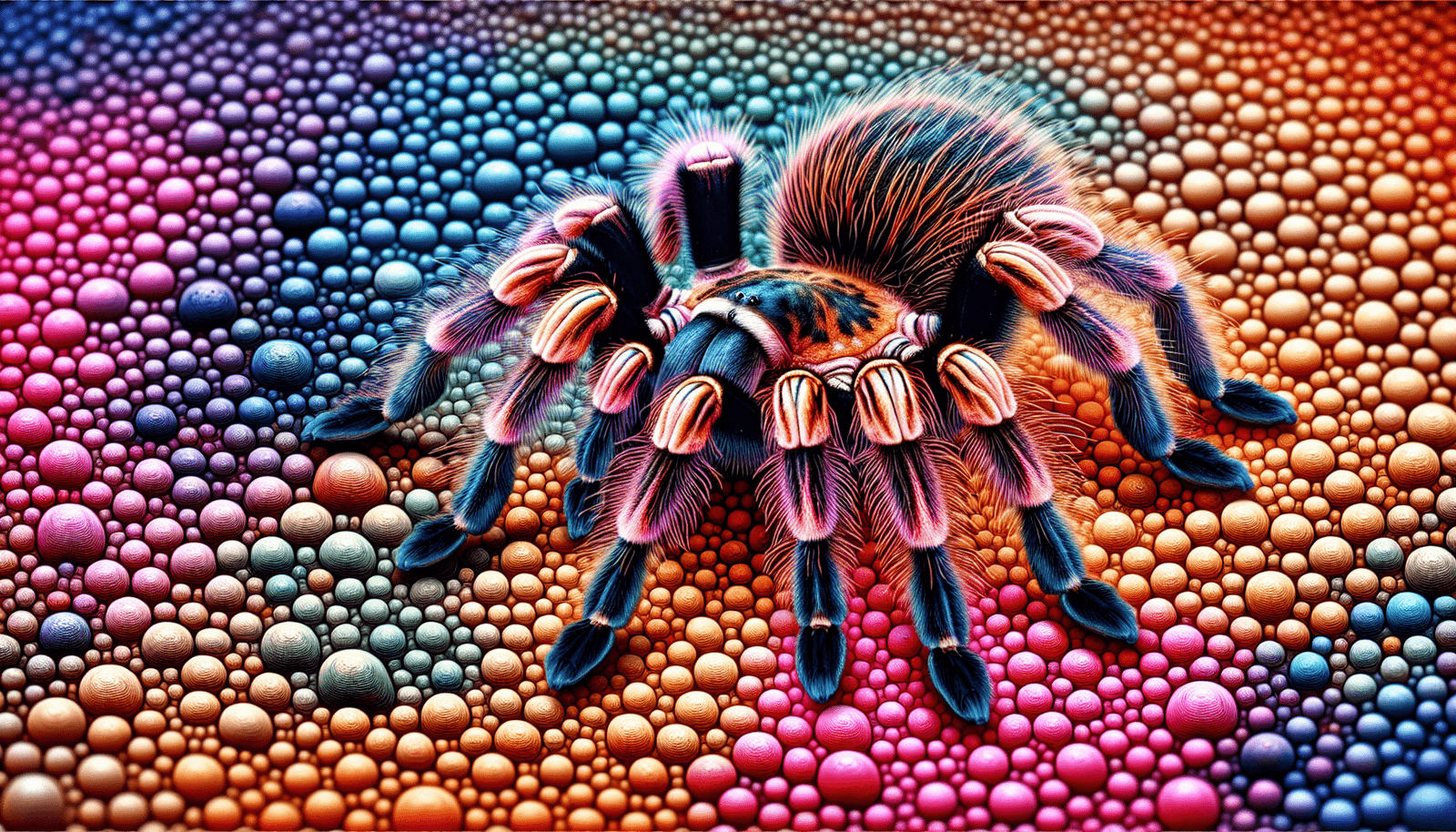Have you ever wondered how the color of the ground in a tarantula’s habitat can influence its behavior? This question might sound a bit strange at first, but the environment plays a crucial role in the way creatures interact with their surroundings. Tarantulas, with their mesmerizing appearance and fascinating behaviors, offer a unique opportunity to explore this concept further. Understanding the impact of substrate color on their behavior can shed light on their instincts and survival mechanisms.

Understanding Tarantulas: An Introduction
Tarantulas are a group of large, hairy spiders belonging to the family Theraphosidae. With more than 1,000 species identified worldwide, these intriguing creatures are often found in a variety of habitats ranging from deserts to rainforests. They are primarily nocturnal predators and rely heavily on their physical environment for survival.
Tarantula Habitats: A Brief Overview
Tarantulas inhabit diverse ecosystems, and their adaptability is linked to their survival strategies. They are ground-dwellers and often reside in burrows or under logs, where environmental factors such as temperature, humidity, and substrate type come into play. Substrate, in particular, affects their behavior, hunting strategies, and overall well-being.
The Role of Substrate in Tarantula Enclosures
When creating a habitat for captive tarantulas, enthusiast keepers and researchers must carefully consider the substrate. The substrate is more than just a surface; it impacts how tarantulas move, hunt, and feel secure. Understanding this dynamic helps in creating optimal conditions for their care and study.
Substrate Types Commonly Used for Tarantulas
There are several substrates commonly used in tarantula enclosures, each with its own set of characteristics. Some popular choices include:
- Coconut fiber: Known for retaining moisture and providing a natural look.
- Peat moss: Another moisture-retentive option, often used for species in humid environments.
- Topsoil: Offers a more natural underground burrowing experience.
- Sand: Used for desert-dwelling species due to its dryness and texture.
Each substrate type interacts differently with light and color, influencing the perception and comfort of the tarantula.

The Science Behind Color Perception in Tarantulas
While tarantulas rely heavily on tactile and chemical cues, color perception isn’t entirely absent. Though their vision is less developed, environmental color can still affect their behavior due to indirect factors such as temperature regulation and camouflage.
How Tarantulas ‘See’ the World
Tarantulas possess multiple simple eyes that primarily detect light intensity and movement rather than detailed images. This vision aids them in distinguishing between day and night, yet how they perceive color remains an area of active research.
Influence of Color on Behavior
The environment’s color, including substrate color, can influence various behaviors in tarantulas:
-
Thermoregulation: Darker colors tend to absorb more heat, potentially affecting the tarantula’s ability to regulate its body temperature. Conversely, lighter substrates might reflect light and create cooler conditions.
-
Camouflage: A substrate color similar to the tarantula’s natural habitat might provide better camouflage, aiding in predator avoidance and hunting efficiency.

Exploring the Impact of Substrate Colors
To understand how substrate color impacts tarantula behavior, it’s crucial to look at specific aspects such as movement patterns, feeding behavior, and stress levels. Let’s examine these components in detail.
Movement Patterns
Substrate color can influence how comfortably and confidently a tarantula moves within its environment. Observations indicate that tarantulas might exhibit more exploration and activity on substrates that blend with their natural coloration.
Table: Impact of Substrate Color on Movement
| Substrate Color | Observed Behavior |
|---|---|
| Dark Brown | Increased activity, possible due to camouflage support |
| Light Sand | Reduced movement, likely due to visibility and lack of cover |
| Green | Neutral response, possibly associated with low familiarity |
Feeding Behavior
A tarantula’s willingness to hunt can be linked to substrate comfort. Colors that mimic safe, natural conditions might encourage natural hunting tendencies and regular feeding schedules.
Table: Substrate Color and Feeding Response
| Substrate Color | Feeding Frequency | Explanation |
|---|---|---|
| Dark Earth Tone | High | Resembles natural burrow environment |
| Bright White | Low | High visibility may cause stress |
| Mixed Shades | Moderate | Variety may stimulate varied response |
Stress and Well-being
While the exact indicators of stress in tarantulas are subtle, certain substrate colors may indirectly affect their stress levels through environmental changes like temperature or visibility.
Table: Indicators of Stress in Relation to Substrate Color
| Substrate Color | Stress Indicators |
|---|---|
| Black | Increased hiding, reduced eating |
| Pale Yellow | Frequent activity, web-spinning (for security) |
| Natural Green | Stable behavior, consistent feeding |

Practical Implications for Tarantula Keepers
For tarantula enthusiasts and researchers, understanding substrate color implications is vital in creating an enriching and suitable environment. This, in turn, contributes to the overall health and well-being of these captivating arachnids.
Choosing the Right Substrate
Selecting substrate color involves considering the specific species and its natural habitat. Matching the color and type to what tarantulas might encounter in the wild helps enhance their sense of security and normal behavioral patterns.
Regular Monitoring and Adjustment
Continuously observing tarantula behavior can offer valuable insights into how well they adapt to the substrate provided. Adjusting color and texture over time can improve their quality of life.

Concluding Thoughts
The impact of substrate color on tarantula behavior is a fascinating area of study, melding elements of biology, ecology, and aesthetics. By considering the interplay between environment and behavior, you can gain a deeper appreciation for these stunning creatures and better meet their needs. Whether you’re a tarantula keeper or simply captivated by the natural world, understanding the subtle nuances of substrate color can greatly enhance your perspective on these incredible arachnids.